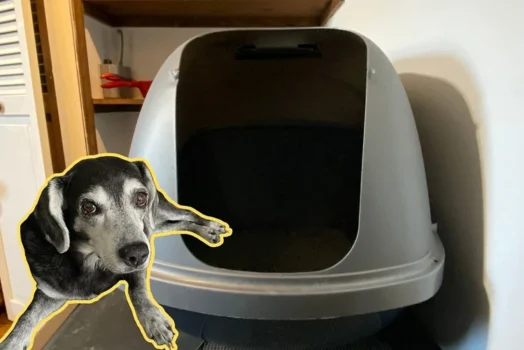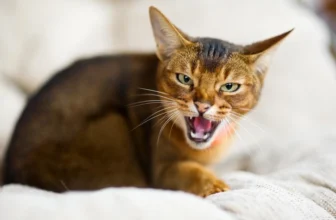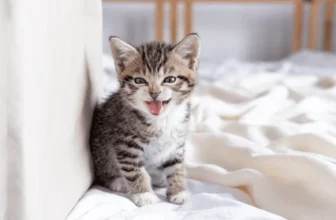As a proud American Wirehair owner, you want to provide the best possible living environment for your feline friend. A crucial aspect of this is creating the perfect litter box setup. With so many options available, it can be overwhelming to decide on the right size, material, and location for the litter box. Not to mention, training your cat to use it can also be a challenge. However, with some helpful tips and tricks, you can set up a litter box that works perfectly for your American Wirehair, and maintain a clean and hygienic home for both you and your furry companion. So, let’s dive in and learn more about the litter box setup for American Wirehairs.
Choosing the Right Litter Box

Finding the right litter box for your American Wirehair is crucial for ensuring that they have a comfortable and stress-free litter experience. When it comes to choosing the right litter box, there are several factors to consider. From size and space to materials and design, making the right choice can make all the difference in your cat’s litter box usage. So, let’s dive into the details of what you need to consider when selecting the perfect litter box for your American Wirehair. And if you’re struggling with litter box problems, you can check out our article on solutions for American Wirehair litter box problems.
Size and Space
When choosing a litter box for your American Wirehair, size and space are important factors to consider. The litter box should be large enough to comfortably accommodate your cat, allowing them to move around freely and perform their elimination routine without feeling cramped. A good rule of thumb is to choose a litter box that is at least one and a half times the length of your cat.
Additionally, the litter box should have enough space around it to allow your cat to enter and exit without difficulty. It’s essential to ensure that the sides of the litter box are not too high for your American Wirehair to climb over, especially if they are elderly or have mobility issues. Opting for a litter box with lower walls can be helpful in this regard.
When it comes to multiple-cat households, providing enough litter boxes is crucial. As a general rule, you should have one litter box per cat plus one extra. This not only ensures that all cats have access to a litter box whenever needed but also helps to reduce the likelihood of territorial disputes over litter box space.
Choosing the right size and space for the litter box is crucial for ensuring your American Wirehair’s comfort and well-being. A good sized litter box will prevent litter scattering and accommodate your cat. Providing multiple litter boxes will help resolve territorial disputes and reduce the likelihood of accidents. For more information on litter box care for American Wirehairs, check out our relevant article on American Wirehair litter box care.
Open or Covered?
When it comes to choosing between an open or covered litter box, there are factors to consider that can make a significant difference in the litter box usage of your American Wirehair. Firstly, it is important to note that some cats have a preference for a certain type of litter box, so you might have to do some trial and error to find out what works best for your feline friend.
Open Litter Box: An open litter box provides greater visibility and easier access for your American Wirehair. This type of litter box is ideal for cats who are a little bit anxious and need to feel more secure. It also allows for more ventilation, which is beneficial for reducing odors. On the downside, an open litter box makes it easier for litter to scatter outside the box, which can be a hassle to clean up.
Covered Litter Box: A covered litter box can provide your American Wirehair with more privacy, which some cats prefer when doing their business. It also helps contain litter and odors, making it an ideal option if you live in a small space or if you’re sensitive to smells. On the downside, a covered litter box can be less ventilated, contributing to unpleasant odors and potentially causing hygiene problems. Some cats might find the enclosed space too cramped, while others might develop litter box aversion if they don’t like the texture of the plastic or the feel of the doorway.
Ultimately, whether you choose an open or covered litter box depends on your cat’s preferences as well as your own lifestyle and convenience. If you have multiple cats, you might consider providing both types of litter boxes to give them options and reduce territorial conflict. Remember that consistency is key when it comes to litter box training, and if your American Wirehair is having litter box problems, it might be helpful to see if there are any medical reasons or environmental factors affecting their behavior. Additionally, exploring different litter box solutions can help you find ways to improve your feline friend’s litter box habits.
Materials
When it comes to choosing the right materials for your American Wirehair’s litter box, there are a few options to consider. Each material has its own advantages and disadvantages that can affect your cat’s comfort and hygiene.
Clay: One common material for litter is clay. It is absorbent and clumps well, making cleaning easier. However, some clay litters can be quite dusty and may not be the best option for cats or owners with allergies or respiratory issues.
Silica Gel: An alternative to clay is silica gel. This type of litter is highly absorbent and has low dust levels, making it a great choice for cats or owners with respiratory issues. However, it can be quite costly compared to other types of litter.
Recycled Paper: Another option is recycled paper. This litter is eco-friendly and has a softer texture than clay or silica gel. It is also highly absorbent and has very low dust levels. However, some cats may not like the texture of the paper litter and may be less likely to use it.
Wheat: Wheat litter is another eco-friendly option that is made from renewable resources. It is also biodegradable and flushable. However, some cats may not like the scent or texture of wheat litter.
Pine: Pine is another biodegradable option that has a pleasant scent. It is highly absorbent and has low dust levels. However, some cats may not like the scent of pine and may be less likely to use it.
Ultimately, the type of litter you choose for your American Wirehair will depend on your preferences as well as your cat’s. Some cats may be more sensitive to certain materials, so it may be a matter of trial and error to find the right fit. Additionally, consistency in using the same type of litter can help with litter box training.
Consider the factors that are important to you and your furry friend when making a decision on the type of litter to use. For more guidance on litter box usage and American Wirehairs, check out our article on how cats can affect litter box usage for American Wirehairs, or our article on creating consistency in litter box training for your Wirehair.
Selecting the Right Litter

Choosing the right litter is just as crucial as selecting the right litter box. The market is full of different litter types, each with distinct features and benefits. As a responsible pet owner, it’s vital to select the best litter suited for your American Wirehair’s needs. Factors to consider include material, dust levels, and scent. While some litters may work better than others for your cat, finding the proper litter helps to control odors and maintains your cat’s comfort and health. With that in mind, let’s delve into the factors that you should consider when selecting the right litter for your American Wirehair.
Clay vs. Other Materials
When it comes to selecting the right litter for your American Wirehair, there are a variety of options to consider. One of the main decisions to make is choosing between clay litter and other materials.
Clay Litter: Clay litter is one of the most popular choices for cat owners. It is made from natural clay and is highly absorbent, making it effective at controlling odors. However, it can also be extremely dusty, which can be problematic for cats with respiratory issues. Additionally, some clay litters contain silica dust, which has been linked to respiratory problems in humans and cats.
Other Materials: There are several alternative materials to consider, such as:
| Material | Pros | Cons |
|---|---|---|
| Wood Chips or Pellets | Low-dust, natural, biodegradable | May not be as absorbent, can be messy |
| Recycled Paper | Low-dust, highly absorbent, eco-friendly | May not control odor as well as other options |
| Crystal or Silica Gel | Lasts longer, low-dust, effective at controlling odors | Can be expensive, may not be as eco-friendly |
Choosing a litter material for your American Wirehair will largely depend on your cat’s individual needs and preferences. It’s worth experimenting with different options to see which one your cat likes best. Remember to also consider factors such as dust level and environmental impact when making your decision.
Dust Level
When selecting the right litter for your American Wirehair’s litter box, the level of dust is an important factor to consider. Dust-free or low-dust litters are generally recommended as they are better for both humans and cats, especially those who suffer from respiratory issues. Here are some options to consider:
- Paper-based litter: Made from recycled paper, it is biodegradable and eco-friendly. It is also very low dust, making it a great option for cats and their owners who suffer from allergies.
- Wood-based litter: Made from sawdust or wood chips, this litter is highly absorbent and has a pleasant odor. However, it can be quite dusty and should be avoided if your cat has respiratory issues.
- Crystal or silica-based litter: These litters are made from crystal or silica gel and are highly absorbent, reducing the frequency of litter box changes. They are also low dust and have a mild scent to control odor.
- Clumping clay litter: This is a popular and affordable option, but can be quite dusty and may pose a health risk to cats who inhale the dust. If you opt for this type of litter, it’s best to choose a low-dust formula and to keep the litter box clean to minimize dust buildup.
Remember, the litter you choose can have a significant impact on your American Wirehair’s litter box habits and overall health. Take the time to test out different options and observe your cat’s preferences and behavior. If you’re unsure about which litter to choose, consult with your veterinarian for personalized recommendations.
Scented vs. Unscented
When it comes to selecting the right litter for your American Wirehair cat’s litter box, there are a few things to consider. One of those factors is whether to use scented or unscented litter. There are pros and cons to each option, and ultimately, it comes down to your cat’s individual preferences.
Scented litter often contains added fragrances to help mask the smell of your cat’s waste. While this may be pleasing to human noses, it’s important to remember that cats have a much more sensitive sense of smell. Some cats may find the added scent overwhelming or unpleasant, causing them to avoid using the litter box altogether. Additionally, scented litters can also contain chemicals or irritants that could cause respiratory issues, particularly for cats with asthma or other respiratory conditions.
On the other hand, unscented litter may not have the same masking power as scented litter, but it’s generally considered a safer option for your cat’s health. It’s also a better option for cats with sensitive noses or skin sensitivities that may be aggravated by the added fragrances in scented litter. Another benefit of unscented litter is that it allows you to smell any potential health issues with your cat’s waste, such as changes in odor or signs of illness.
To help you weigh the pros and cons of each option, here’s a handy comparison table:
| Scented Litter | Unscented Litter |
|---|---|
| May help mask odors | May not be as effective at masking odors |
| Can contain added chemicals and irritants | Generally considered a safer option for cats with sensitive skin or respiratory issues |
| Some cats may find the added fragrance overwhelming or unpleasant | Allows you to smell any potential health issues with your cat’s waste |
Ultimately, the decision to use scented or unscented litter is up to you and your cat’s preferences. If you’re unsure which option to choose, try both and see which one your cat prefers. Remember to also consider your cat’s health and any potential sensitivities when making your choice.
Placement of the Litter Box
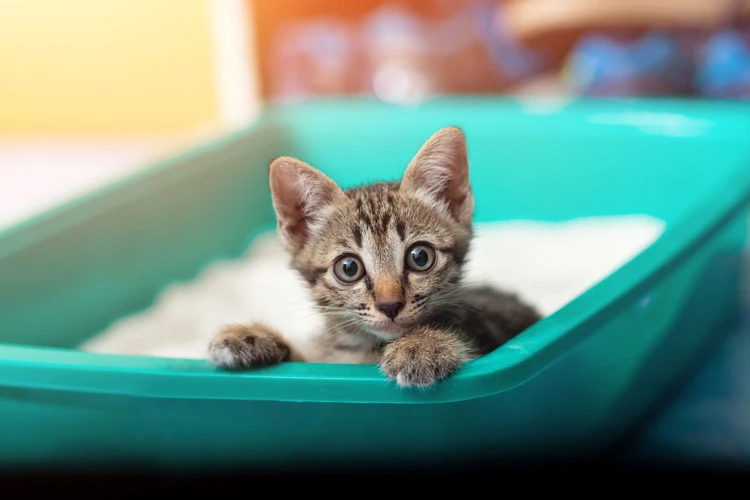
When it comes to setting up the perfect litter box for your American Wirehair, placement is key. Choosing the right location for the litter box can make all the difference in whether your cat readily uses it or not. In this section, we’ll explore the important factors to consider when deciding where to place the litter box to ensure your furry friend is happy and comfortable. Keep in mind that every cat has different preferences, so it may take some experimentation to find the ideal spot for your American Wirehair.
Away from Food and Water
When choosing a location for your American Wirehair’s litter box, it’s important to keep it away from their food and water bowls. This not only prevents your cat from tracking litter into their food and water, but it also helps to maintain their hygiene.
Here are some considerations when placing the litter box:
| DO: | DON’T: |
|---|---|
| Place the litter box in a separate room if possible. | Place the litter box directly next to food and water bowls. |
| Ensure that the litter box is at least 3 feet away from your cat’s food and water bowls. | Place the litter box in a high-traffic area with lots of noise and distractions. Cats prefer privacy when using the litter box. |
| If you have a multi-level home, place a litter box on each level to ensure easy access for your cat. | Place the litter box in a closet or other area that is difficult for your cat to access. This can create a negative association with the litter box. |
Keeping the litter box away from your American Wirehair’s food and water bowls not only keeps them happy and healthy, but it also minimizes potential tracking of litter and waste into their food and water. By following these guidelines, you can ensure that your cat’s litter box setup is ideal for their needs.
In a Quiet and Accessible Area
When deciding where to place your American Wirehair’s litter box, it’s important to consider a location that is both quiet and easily accessible. This will help ensure that your feline friend feels comfortable and at ease while doing their business.
To further elaborate on what makes a good location for the litter box, let’s take a look at some factors to consider.
| Factors to Consider for Litter Box Location: | Importance: |
|---|---|
| Noisy or high-traffic areas | Not ideal |
| Private or quiet areas | Ideal |
| Rooms with doors that can close | Ideal |
| Rooms that are frequently used | Still acceptable |
As you can see, it’s best to avoid noisy or high-traffic areas, such as near the front door or in the middle of a living room. Instead, opt for private or quiet areas, such as a spare room or a corner of a less-frequented area. If possible, choose a location with a door that can close to give your cat extra privacy.
Keep in mind that it’s important to choose a location that is easily accessible for your cat as well. This means avoiding areas that require your cat to navigate up or down stairs or through tight spaces. For older cats or those with mobility issues, it’s especially important to choose a location that is easy for them to access.
When choosing a location for the litter box, keep your cat’s comfort in mind. A quiet and accessible area will help ensure that your American Wirehair uses the litter box consistently and without issue.
Accessibility for Older Cats
It’s important to consider the accessibility of the litter box for older cats. As cats age, they may develop mobility issues or arthritis that can make it difficult for them to climb in and out of a traditional litter box. Here are some tips for creating a setup that accommodates older cats:
- Low entry: Choose a litter box with a low entry point, so your cat doesn’t have to elevate their legs too high. This makes it easier for them to get in and out of the box.
- Ramp: If your cat is still having trouble accessing the litter box with a low entry point, you can create a ramp to help them. Place a sturdy board or piece of carpet next to the litter box that goes up to the entrance. This ramp gives your cat an easier incline to climb up to enter the litter box.
- Shallow litter: Consider using a shallower litter box or using less litter in the box. This can help avoid deep piles of litter that may be harder for older cats to climb through.
- Multiple Litter Boxes: To make it easier for older cats to access the litter box, consider having multiple litter boxes located around your home. This way, your cat doesn’t have to travel a long distance to find a litter box and can easily choose the one that is most accessible for them at the time.
By taking steps to ensure the litter box is accessible for older cats, you can maintain good litter box habits in your aging feline and avoid any unnecessary discomfort or stress.
How Many Litter Boxes Do You Need?
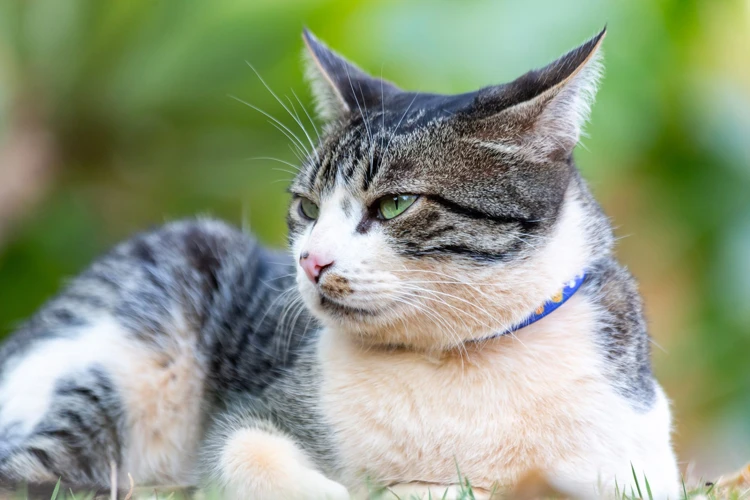
When it comes to setting up litter boxes for your American Wirehair, the number of litter boxes you need is an important consideration. The general rule of thumb is to have one litter box per cat plus one extra. So, if you have one American Wirehair, you should have at least two litter boxes.
Having multiple litter boxes provides several benefits. Cats can be picky about their litter boxes and if one box is dirty or doesn’t meet their preferences, they may refuse to use it. Having multiple boxes ensures that your cat always has a clean and accessible place to go. Additionally, some cats prefer to urinate in one box and defecate in another, so multiple boxes can accommodate their preferences.
It’s also important to consider the layout of your home. If you have a large or multi-story home, you’ll want to have litter boxes on each floor to provide easy access for your American Wirehair. If you have multiple cats, having litter boxes in different locations can also help to minimize territorial issues.
Keep in mind that the size and style of litter box you choose can also impact the number of boxes you need. If you have a large litter box, it may be sufficient for multiple cats, whereas if you have a small box, you’ll need more for each cat to have enough space.
Ultimately, the goal is to provide your American Wirehair with enough clean and accessible litter boxes to keep them comfortable and encourage good litter box habits. It may take some trial and error to find the right number and style of litter boxes for your cat, but investing the time and effort will pay off in the long run.
Cleaning and Maintenance

Keeping your American Wirehair’s litter box clean is an essential part of pet ownership. It not only helps prevent unpleasant odors from taking over your home, but it also ensures your cat has a clean and comfortable place to do their business. However, cleaning and maintaining a litter box can be a daunting task for some pet owners. Don’t worry! In this section, we’ll dive into the details of how often to clean, what cleaning tools to use, and how to keep the litter box disinfected and deodorized. So, let’s roll up our sleeves and get started!
How Often Should You Clean?
Keeping the litter box clean is important for both your American Wirehair’s health and your home’s cleanliness. So, how often should you clean the litter box?
It’s recommended that you clean the litter box at least once a day. This means scooping out any waste and clumps and replacing the soiled litter with fresh litter. However, if you have more than one cat using the same litter box, or if your American Wirehair is a finicky litter user, you may need to clean more often.
To make it easier to keep track of litter box cleaning, you can use a schedule. Here is a suggested schedule:
| Day of Week | Cleaning Task |
|---|---|
| Monday | Full litter box cleaning: emptying old litter, scrubbing with soap and water, refilling with fresh litter |
| Tuesday | Scoop out waste and clumps, replace with fresh litter as needed |
| Wednesday | Scoop out waste and clumps, replace with fresh litter as needed |
| Thursday | Scoop out waste and clumps, replace with fresh litter as needed |
| Friday | Scoop out waste and clumps, replace with fresh litter as needed |
| Saturday | Scoop out waste and clumps, replace with fresh litter as needed |
| Sunday | Scoop out waste and clumps, replace with fresh litter as needed |
Of course, this schedule can be modified to fit your lifestyle and your American Wirehair’s litter habits. The most important thing is to make sure that the litter box is cleaned regularly to prevent any unpleasant odors and to maintain a healthy living environment for your cat.
Tools for Cleaning
Keeping a litter box clean is crucial for the health of your American Wirehair cat. There are several essential tools you’ll need to make the cleaning process easier and more effective.
| Tools | Description |
|---|---|
| Litter Scoop: | This tool allows you to scoop clumps of waste out of the litter box. Look for a scoop that has wide slots to let clean litter fall through while retaining the waste. A long handle is also helpful for reaching into deep litter boxes. |
| Gloves: | Wearing disposable gloves helps protect your hands from bacteria and odors. Choose gloves that fit well and are strong enough to resist tearing while you clean. |
| Trash Can: | A sturdy, lidded trash can is essential for disposing of used litter. Make sure the lid is tight-fitting to contain odors and prevent spills. |
| Cleaning Solution: | Choose a cleaning solution that is safe for pets and specifically designed for use with litter boxes. Many pet stores sell such cleaners. Avoid using bleach or other harsh chemicals that could harm your cat. |
| Cleaning Cloth: | A microfiber or other soft cloth is ideal for wiping down the litter box after you’ve emptied it. Be sure to clean the cloth well after each use so as not to spread germs. |
Using these tools can make cleaning the litter box a less unpleasant chore. Keep them handy near the litter box so you can clean up any messes quickly. Remember to wash your hands thoroughly after handling any litter or cleaning materials.
Disinfecting and Deodorizing
When it comes to maintaining a clean and fresh-smelling litter box for your American Wirehair, disinfecting and deodorizing are essential steps. Here are some tips to keep it a habit and to make sure it is done right:
| Task | Frequency | Cleaning Product |
|---|---|---|
| Empty and Rinse | Every 1-2 weeks (or as needed) | Mild detergent and water |
| Disinfect | Every 2-4 weeks (or as needed) | Bleach solution (1 part bleach to 32 parts water) |
| Deodorize | Every 1-2 weeks (or as needed) | Baking soda or commercial deodorizer |
Empty and Rinse: Scoop out solid waste daily, and empty all the contents of the litter box once every 1-2 weeks. Scrub the box with mild detergent and warm water, then rinse it well with water. Avoid using harsh chemicals or too much soap, as this can leave a residue that is harmful to your cat.
Disinfect: Every 2-4 weeks, it is important to disinfect the litter box to get rid of bacteria, viruses, and other harmful microorganisms. Use a bleach solution made of 1 part bleach to 32 parts water, or use a pet-safe disinfectant. Allow the solution to sit in the box for at least 10 minutes before rinsing it thoroughly with water.
Deodorize: To keep the litter box smelling fresh, sprinkle baking soda over the bottom of the litter box before adding litter. For even more odor control, use a commercial deodorizer specifically made for cat litter boxes, following the instructions on the label.
Remember to wear gloves and prevent your cat and other pets to get into the litter box while disinfecting and deodorizing. By following these tips, you can keep your American Wirehair’s litter box clean and hygienic, ensuring their good health and hygiene.
Training Your American Wirehair to Use the Litter Box

When it comes to training your American Wirehair to use the litter box, consistency is key. Start by placing your cat in the litter box after meals, waking up, and before bed. Encourage your cat to dig in the litter with their paws, as this will help stimulate the natural instinct to use the box for elimination.
Positive reinforcement is also a powerful tool in this process. When your cat successfully uses the litter box, praise them and offer treats. Be patient and avoid punishment, as negative reinforcement can cause confusion and anxiety in your cat.
It’s also important to pay attention to your cat’s behavior outside of the litter box. If they seem to be avoiding it or eliminating in other areas of the house, it may be a sign that they need a different type of litter or a second litter box.
Additionally, avoid making sudden changes to the litter box setup or location, as this can also cause confusion and disrupt the training process. Stick to a consistent routine and environment to help your American Wirehair successfully use the litter box.
Dealing with Common Litter Box Problems
Keeping American Wirehairs happy and healthy often hinges on their litter box habits. While some felines are naturally inclined to use their litter boxes with ease, others are prone to issues that can leave their owners frustrated and stressed. In this section, we’ll explore some of the common litter box problems that American Wirehairs and their owners may face, and offer tips and strategies for addressing them. From accidents outside the litter box to cats that refuse to use it altogether, this section will provide valuable insights for handling even the trickiest litter box challenges.
Accidents Outside the Litter Box
Accidents outside the litter box can be frustrating, but they are also common. There can be various reasons why your American Wirehair may start relieving themselves outside of the litter box. Here are some possible explanations and solutions:
| Possible Cause | Solution |
|---|---|
| The litter box is too small or inadequately filled with litter | Make sure to choose a litter box that is appropriately sized and has enough litter. Also, check the litter box frequently and refill with fresh litter as needed. |
| The location of the litter box is inconvenient or stressful for your cat | Try moving the litter box to a quieter and more accessible area. Also, make sure that there are no loud or startling noises in the vicinity. |
| Medical issues such as urinary tract infections or gastrointestinal problems | Take your cat to the vet as soon as possible to rule out any medical problems. If there is an underlying health issue, your veterinarian can provide the necessary treatment. |
| Changes in household routine or schedule | Abnormal routine or schedule changes can cause stress to your American Wirehair. Try to maintain a consistent routine, especially when it comes to feeding and litter box cleaning times. |
| Old age or mobility issues | If your cat is older, it may be difficult for them to climb in and out of a high-sided litter box. Consider switching to a lower-sided litter box or providing a step stool to assist them. |
Remember to give your American Wirehair extra love and attention during this time, as they may be feeling stressed or anxious. Patience and consistency are key in addressing litter box accidents and creating a peaceful and happy home for both you and your cat.
Refusing to Use the Litter Box
It can be perplexing when your American Wirehair refuses to use the litter box. This may be a sign of a medical issue or a behavioral problem. It is important to rule out any possible medical problems by taking your cat to the vet for a check-up. Once you have ruled out any medical issues, you can take steps to address any behavioral problems.
One possible reason your cat may be refusing to use the litter box is because it is too dirty. Cats are naturally clean animals and if their litter box is not kept clean, they may be reluctant to use it. Make sure to clean the litter box regularly and keep it fresh.
Another reason your cat may be refusing to use the litter box is because they don’t like the litter. Some cats are picky about the type of litter they use and may refuse to use the litter box if they don’t like the texture or smell of the litter. Consider trying a different type of litter to see if this solves the problem.
If the litter box is in a noisy or heavily trafficked area, your cat may not want to use it. Try moving the litter box to a quieter location where your cat can use it in peace.
Another reason your cat may be refusing to use the litter box is because of the location. If the litter box is too close to their food and water bowls, they may not want to use it. Cats prefer to keep their litter box separate from their eating area.
If your American Wirehair continues to refuse to use the litter box, consider consulting with a veterinarian or a cat behaviorist for additional guidance.
Table: Reasons Why Cats Refuse to Use the Litter Box
| Reasons | Solutions |
|---|---|
| Dirty litter box | Clean the litter box regularly and keep it fresh |
| Dislike the litter | Try a different type of litter |
| In a noisy or heavily trafficked area | Move the litter box to a quieter location |
| Too close to food and water | Separate the litter box from the eating area |
Litter Box Aversion
Litter box aversion is a common problem among cats, including American Wirehairs. This occurs when a cat suddenly stops using the litter box, which can lead to messes outside of the box and inappropriate urination and defecation.
Causes of Litter Box Aversion:
- Dirty litter box: Cats are fastidious creatures and may not use a litter box if it is not clean enough for their liking. Make sure to scoop the litter box at least once a day and completely change the litter and clean the box at least once a week.
- Location: The placement of the litter box is important. If it’s in a noisy or high-traffic area, it could cause your American Wirehair to avoid using it.
- Litter type: Some cats have a sensitivity to certain types of litter, so make sure to experiment with different litter types until you find one that your cat is comfortable using.
- Medical issues: Certain medical issues, such as urinary tract infections, can make it painful for a cat to use the litter box. If you suspect your cat is experiencing pain while using the litter box, schedule an appointment with your veterinarian as soon as possible.
Tips for Dealing with Litter Box Aversion:
- Clean the litter box regularly and keep it in a quiet, private location.
- Experiment with different types of litter to find the one that your cat prefers.
- If you suspect your cat has a medical issue, consult with your veterinarian to rule out any underlying health problems.
- Provide multiple litter boxes throughout your home to increase the chances of your American Wirehair using one of them.
- Try adding a pheromone spray, such as Feliway, to the area around the litter box to help reduce stress and encourage your cat to use the box.
By taking these steps, you can increase the likelihood that your American Wirehair will use the litter box on a consistent basis and reduce the chances of accidents outside of the box.
Conclusion
In conclusion, setting up a litter box for your American Wirehair is an important aspect of cat ownership. Choosing the right litter box, selecting the appropriate type of litter, and placing the box in an ideal location can help encourage your cat to use it regularly. Remember to clean the litter box frequently, using the proper tools and disinfectants to prevent the spread of germs and odors. If your cat experiences any litter box problems, such as aversion or accidents outside the box, be patient and try different solutions until you find what works best for your pet. With proper setup and maintenance, your American Wirehair can have a comfortable and clean area to use the bathroom, making for a happier home for both you and your feline companion. So, follow these tips and tricks to ensure that your cat consistently uses the litter box and maintain a healthy environment for your pet.
Frequently Asked Questions
Can I use any size litter box for my American Wirehair?
No, a larger litter box is usually better for the American Wirehair breed due to their larger size.
Is it better to choose an open or covered litter box?
This can depend on the individual cat, but generally an open litter box is better for American Wirehairs as it provides more space and allows for better ventilation.
Should I choose a scented or unscented litter?
It is usually best to choose an unscented litter, as some scented litters can be overwhelming for cats and may cause them to avoid the box.
How often should I clean the litter box?
You should scoop the litter box daily and completely clean it at least once a week.
What materials are best for litter boxes?
Plastic and ceramic are two common materials used for litter boxes. Ceramic can be easier to clean and can also prevent bacteria growth, while plastic is often more affordable and lightweight.
How many litter boxes do I need for one American Wirehair?
It is generally recommended to have one litter box per cat, plus an extra one.
Can I use any type of litter for my American Wirehair?
Clay litter or other similar materials are usually effective for American Wirehairs, but ultimately it depends on the preferences of the individual cat.
Should I place the litter box in a quiet area?
Yes, it is usually best to place the litter box in a quiet and accessible area to allow your American Wirehair to feel comfortable using it.
What should I do if my cat refuses to use the litter box?
You should first ensure that the litter box is clean and in a comfortable location. If your American Wirehair still refuses to use it, consult with a veterinarian to rule out any underlying health issues.
What should I do if my American Wirehair has accidents outside of the litter box?
You should first ensure that the litter box is clean and easily accessible. If your cat continues to have accidents, consult with a veterinarian to rule out any underlying health issues or behavioral problems.

